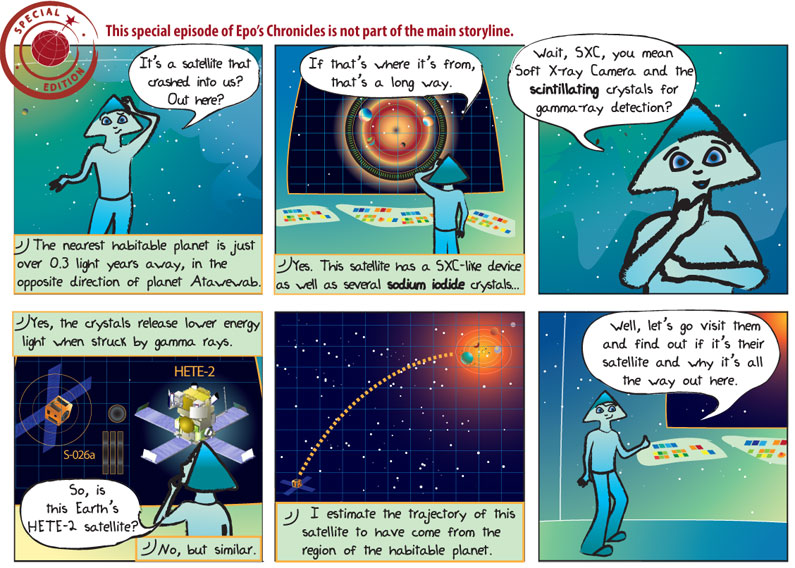
What does it mean?
Scintillation – When high energy light, such as gamma rays, strikes certain substances, such as sodium iodide crystals, it produces a flash of lower energy light. Physicists call this process scintillation.
Sodium Iodide Crystals – These specially treated crystals, made from sodium and iodine atoms, are used as part of gamma-ray detectors. The gamma rays produce flashes of optical light when they pass through the crystals, and the optical flashes are detected by photomultipliers – devices that convert visible light into electric current.
In human speak please!
The High Energy Transit Explorer (HETE) is an internationally supported satellite mission primarily between the United States, France and Japan. It was launched on October 9th, 2000 and carried several mutliwavelength instruments including; FREGATE (FREnch Gamma ray TElescope), the WXM (Wide-field X-ray Monitor), and the SXC (Soft X-ray Camera).
HETE-2 observed the gamma-ray burst GRB 030329, which conclusively linked some types of gamma-ray bursts to supernovae. HETE-2 also confirmed the existence of the gamma-ray burst subclass called X-Ray Flashes (XRF).
Is that all?
HETE-2 Website – HETE-2 mission website at Massachusetts Institute of Technology (MIT). Please note: The website is no longer being updated.
